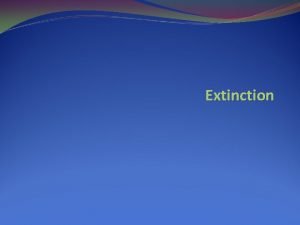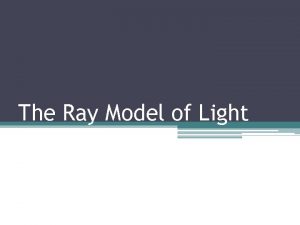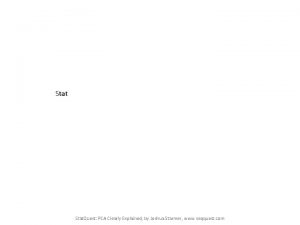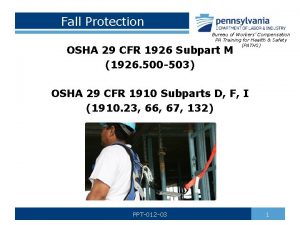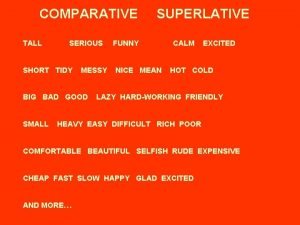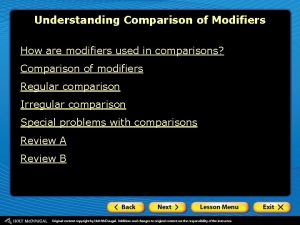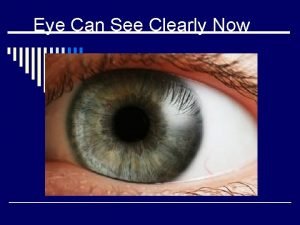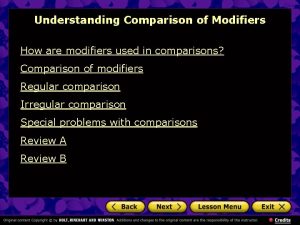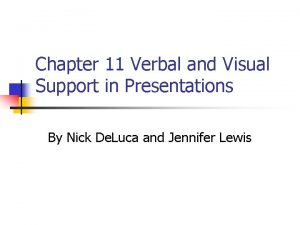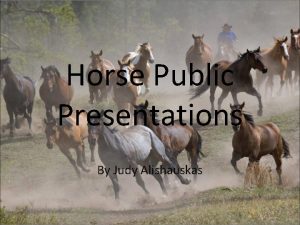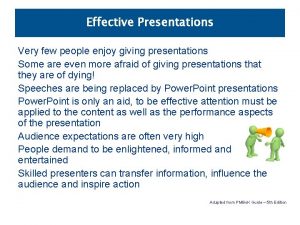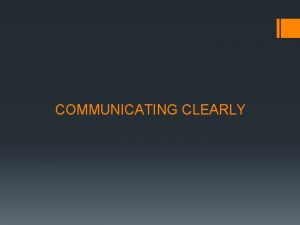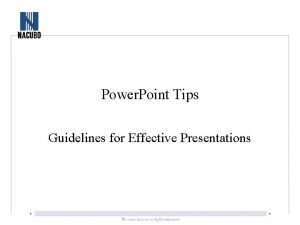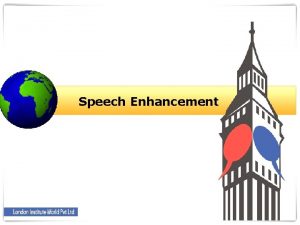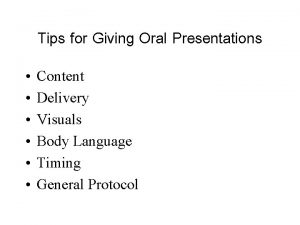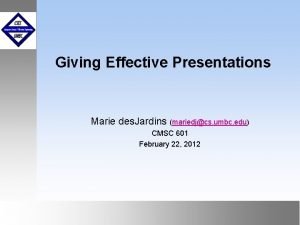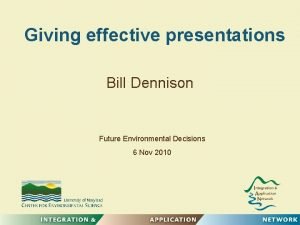Tips on Giving Effective Scientific Presentations Speak clearly























- Slides: 23

Tips on Giving Effective Scientific Presentations

• Speak clearly and confidently – engage your audience • make eye contact with the audience – don’t face your slides • speak at an appropriate pace • don’t read text directly from slides • use a pointer if necessary – bring one if necessary • use an appropriate balance of text and images/figures – a slide with an overwhelming amount of text is not effective

• Keep slides simple – background – animations – etc. • Be efficient with your presentation • Know your audience – and their knowledge level of your subject • practice, practice • Balance quality versus quantity

Presenting figures: • Make sure you understand what’s being presented in the figure • Make sure all fields and axes are clearly labeled or legends with that information are present. • Make sure your figures are clear from the back of the room • Add text that summarizes the important point of a figure • Tell us the story in the data – not what is being shown • Cite where the figure came from if you did not create it

Is this figure well cited?

Figure from Fujita (1978)

• Is it clear what is being shown in this figure? • How could the presentation be improved?

Reflectivity (d. BZe) 0. 5 degrees Radial Velocities (ms -1) 0. 5 degrees GUST FRONT

• Is it clear what fields are being displayed in this figure?


• Add schematic diagrams to make interpretation easier

Low-Level (0 -2. 5 km) Shear Experiments

• Explicitly state the important point of a figure

Coriolis Forcing Experiments Convergence of planetary vorticity enhances cyclonic mesovortices (see also Trapp and Weisman 2003)

Simple schematic diagrams can be very effective at summarizing your conclusion(s)


Your figures should tell a story

Mesovortex Genesis: downdraft ld co l nta ity rtic zo ori H vo w m ar From Atkins and St. Laurent (2009 b, MWR) Updrafts tilt horizontal streamwise vorticity

How do low-level stable layers weaken mesovortices? downdraft ld co l nta ity rtic zo ori H vo w m ar From Atkins and St. Laurent (2009 b, MWR)

Sometimes, a single statement slide is effective at highlighting an important point or question

Do low-level stable layers inhibit damaging surface winds in bow echoes?

Use color in text slides to highlight the most important points

Unresolved Questions: 1. Bow echoes form in a variety of CAPE/shear environments. How are mesovortices affected by: üLow-level (0 -2. 5 km) shear üDeeper (0 -5 km) shear üCoriolis forcing üCold pool strength? 2. Within a bow echo, why are some mesovortices damaging while others are not? 3. How do mesovortices form? (Part II)
 Designing and delivering oral and online presentation
Designing and delivering oral and online presentation The craft of scientific presentations
The craft of scientific presentations How to speak without preparation
How to speak without preparation Information gathered during an experiment
Information gathered during an experiment How is a scientific law different from a scientific theory?
How is a scientific law different from a scientific theory? Withholding reinforcement for a target response
Withholding reinforcement for a target response Name the two parts that make up most mirrors.
Name the two parts that make up most mirrors. Clearly trivial threshold
Clearly trivial threshold Expressing your views clearly and respectfully
Expressing your views clearly and respectfully Statquest with josh starmer
Statquest with josh starmer Semantic elements
Semantic elements The disk shown below in (1) clearly has
The disk shown below in (1) clearly has A is a work area designated and clearly marked in which
A is a work area designated and clearly marked in which Superlatif funny
Superlatif funny Two closed pyramid shaped beakers containing clearly
Two closed pyramid shaped beakers containing clearly Modifiers comparatives
Modifiers comparatives Eye can see clearly now
Eye can see clearly now A problem clearly stated is a problem half solved
A problem clearly stated is a problem half solved Comparative and superlative modifiers
Comparative and superlative modifiers Opinion paragraph
Opinion paragraph Example of verbal support?
Example of verbal support? Horse topics for presentations
Horse topics for presentations Catchy titles for presentations
Catchy titles for presentations Internet presentations
Internet presentations





